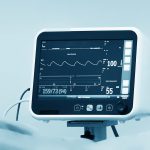The term State of the Art (SOTA) has taken on renewed significance under the EU Medical Device Regulation (EU MDR 2017/745) and other evolving global frameworks. While SOTA has always played a critical role in product development and safety, the MDR formalizes its relevance, demanding that manufacturers explicitly demonstrate how their devices align with or improve upon the current standard.
SOTA, or State of the Art, refers to the accepted level of safety and performance that is achievable at a given point in time, based on current scientific knowledge, technology, and clinical practice. Importantly, SOTA does not mean the most innovative or cutting-edge technology – rather, it signifies what is generally accepted and proven as the current best practice within a medical context.
Under MDR, SOTA is not a buzzword; it’s a regulatory requirement that must be demonstrated and documented, particularly in:
- Clinical Evaluation Reports (CERs)
- Risk Management Files
- Post-Market Surveillance (PMS)
- Technical Documentation
Why SOTA Matters Under MDR
With the MDR replacing the earlier Medical Device Directive (MDD), regulatory expectations have significantly increased. One of the most profound changes is the requirement to contextualize a device within the current SOTA.
Here’s why this is crucial:
- Enhanced Safety Requirements: MDR focuses heavily on patient safety. Demonstrating alignment with SOTA ensures that a device does not lag behind in safety or performance.
- Benchmarking Device Claims: Manufacturers must show how their device performs relative to existing technologies and clinical practices.
- Evidence-Based Validation: Notified Bodies now require robust data-driven justification of SOTA claims in clinical evaluation and risk-benefit analysis.
- Mitigating Obsolescence Risk: Devices that fail to meet the current SOTA could be deemed obsolete, posing regulatory and commercial risks.
SOTA vs Innovation: Clearing the Misconception
A common misunderstanding is that “State of the Art” equates to “innovative” or “most advanced.” In fact:
- SOTA = Proven and Accepted Practice
- Innovation = Emerging and Unproven Solutions
While innovation may eventually become the new SOTA, there is a necessary maturity curve. Regulatory authorities are more concerned with evidence-based alignment with accepted standards than with untested innovations, particularly when it comes to patient safety.
Where SOTA Fits in the MDR Framework
Let’s explore specific areas where SOTA is explicitly referenced or implied:
- Clinical Evaluation (Annex XIV of MDR)
Manufacturers must:
- Identify relevant devices or procedures that represent SOTA.
- Compare their device’s performance and safety against these benchmarks.
- Justify how the device conforms to or improves upon the SOTA.
- Risk Management (Annex I of MDR)
The risk-benefit ratio must be acceptable relative to the SOTA. If existing devices pose lower risk with similar benefit, the new device must justify its added value.
- Post-Market Surveillance
SOTA informs ongoing PMS activities by identifying emerging trends or alternatives that may shift the standard. This feeds into the Periodic Safety Update Report (PSUR) and Post-Market Clinical Follow-up (PMCF).
How to Identify and Define SOTA
Properly defining SOTA involves a systematic literature review and analysis of clinical practice guidelines, market data, and competitor products. Key steps include:
- Literature Review
- Search reputable databases (PubMed, Embase, etc.) for recent studies and meta-analyses.
- Focus on peer-reviewed, high-quality publications from the last 5–10 years.
- Competitor Benchmarking
- Compare similar CE-marked devices or FDA-approved products.
- Document specifications, performance data, and known risks.
- Clinical Guidelines & Position Statements
- Review guidelines from professional associations (e.g., EAU, EACTS).
- Analyze how current clinical practice defines acceptable safety and performance.
- Regulatory Decisions
- Monitor Notified Body guidance, expert panels, and regulatory outcomes from EUDAMED and FDA databases.
Best Practices for Demonstrating SOTA
To ensure compliance, consider these best practices:
- In Clinical Evaluation Reports:
- Clearly define what constitutes SOTA in your device’s therapeutic area.
- Use a combination of clinical data, standards, and competitor benchmarking.
- Justify the relevance of selected sources.
- In Risk Management Documentation:
- Describe how SOTA informs risk identification and mitigation.
- Compare residual risks with those of existing devices.
- In Product Development Strategy:
- Incorporate SOTA findings into design inputs and validation protocols.
- Use SOTA as a reference in usability engineering, biocompatibility, and performance testing.
- In Post-Market Planning:
- Monitor literature and competitor developments that may redefine SOTA.
- Update CERs and PMS plans accordingly.
Common Pitfalls to Avoid
- Outdated References: Using clinical data older than 10 years without justification can undermine your SOTA claims.
- Ignoring Emerging Standards: ISO and IEC standards evolve – ensure alignment with the latest versions.
- Vague Definitions: A weak or generic definition of SOTA won’t satisfy Notified Bodies. Be specific and evidence-based.
- Failure to Update: As SOTA evolves, your documentation must be living – not static.
How SOTA Affects Market Authorization
Proper SOTA demonstration is critical not only for MDR compliance but also for:
- Successful Technical File Submissions
- Avoiding Delays or Rejections
- Gaining Competitive Edge
With regulators scrutinizing devices more than ever, especially high-risk and implantable ones, failing to align with SOTA can result in denied certifications or market withdrawals.
Conclusion: SOTA is a Strategic Imperative
In the new regulatory landscape, SOTA is not just a box to check – it’s a strategic tool. It impacts every phase of the product lifecycle, from design and development to post-market surveillance. When properly leveraged, SOTA can drive compliance, reduce risk, and help manufacturers deliver devices that truly meet current medical needs.
For companies navigating MDR, proactively managing SOTA is not only essential for regulatory success – it also demonstrates a deep commitment to patient safety and clinical relevance.
Need help integrating SOTA into your regulatory strategy?
Reach out to our team of regulatory experts to ensure your documentation is audit-ready and your device aligned with the latest standards.


